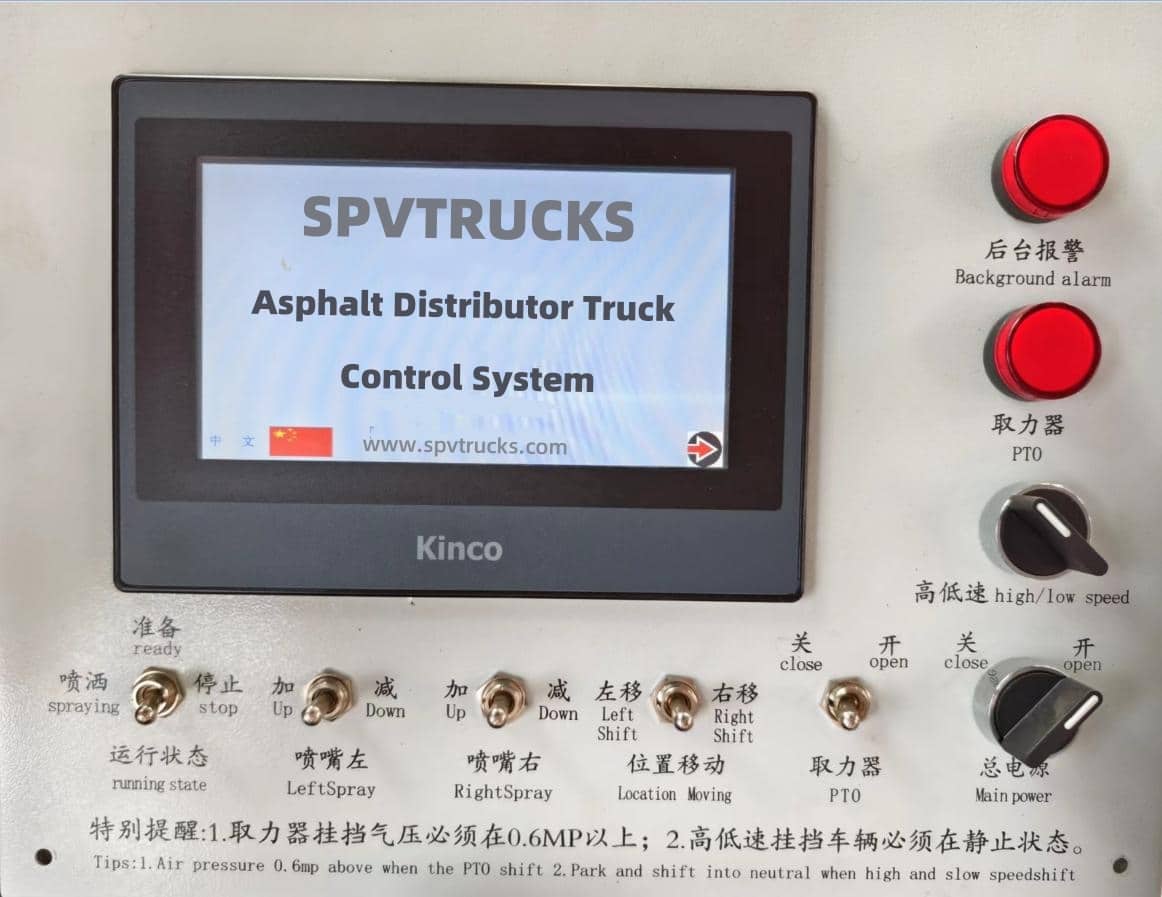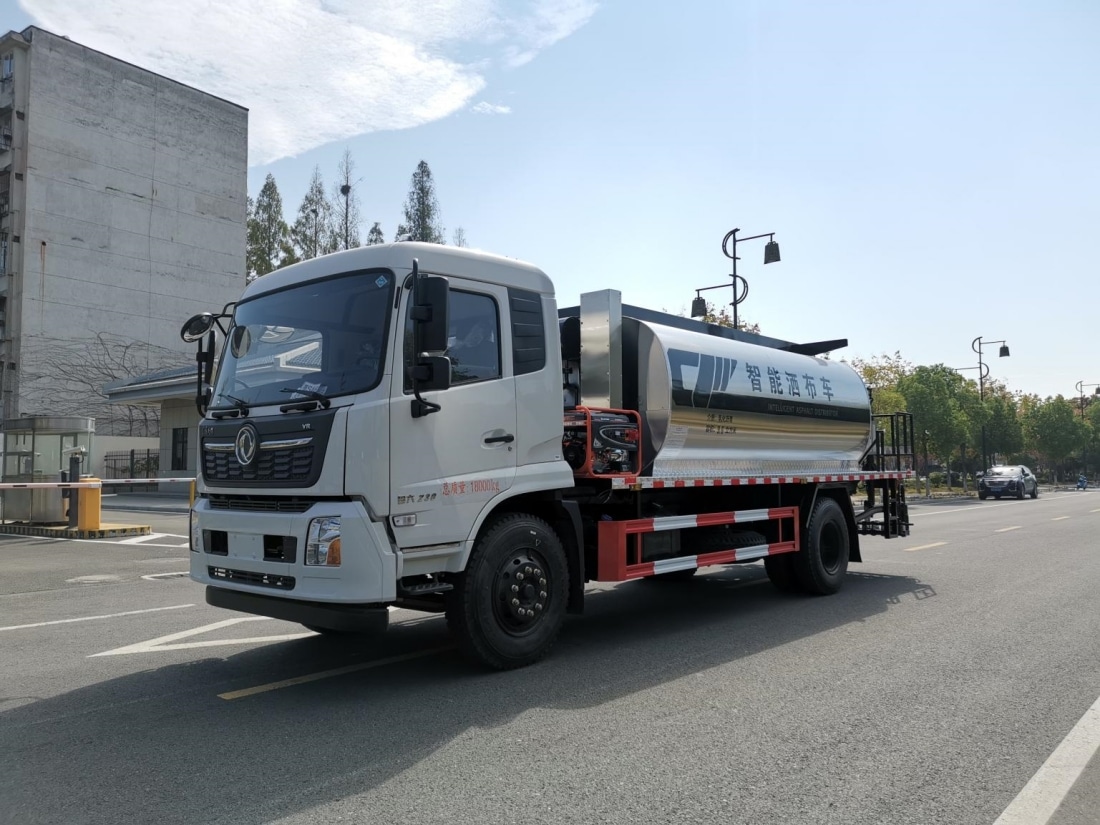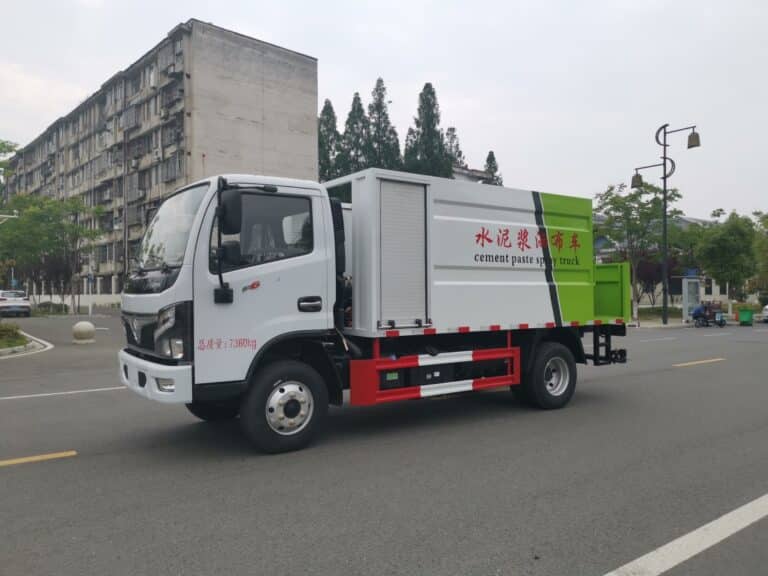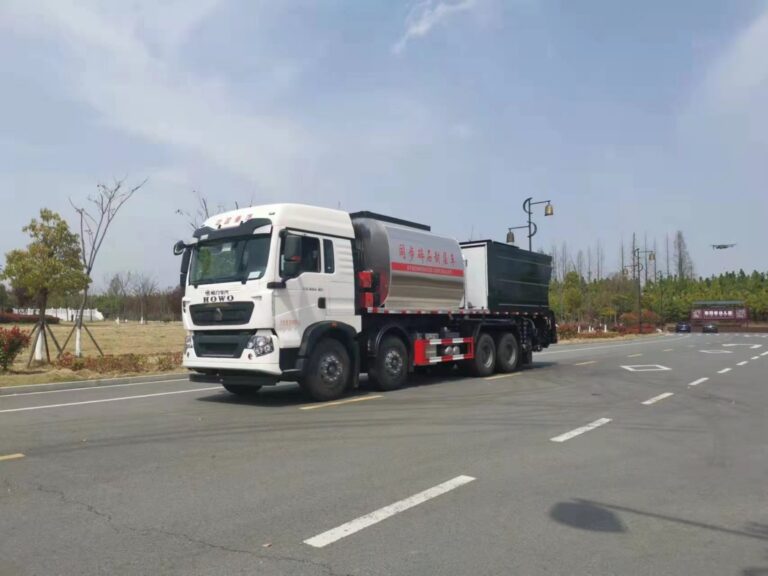Asphalt Distributor Instruction Manual
1. Preface
Dear Valued Customer,
Thank you for your trust and recognition of the SPV brand, and for choosing an SPV Trucks.
This manual is your essential guide to understanding, operating, and maintaining your new asphalt distributor. It details the vehicle’s performance parameters, maintenance procedures, adjustment instructions, and common troubleshooting tips. We strongly recommend keeping this manual readily accessible and ensuring all relevant personnel read it regularly. Fully utilizing this manual, along with any other accompanying maintenance guides, will help keep your vehicle in optimal condition.
This manual is designed to help you operate your machine safely and correctly, and it includes functional descriptions of important components and systems.
To prevent misunderstandings, this manual employs specific technical terminology. Only trained and qualified personnel are permitted to operate this machine. You must always adhere to the guidelines within this manual and all local safety regulations. Following these instructions will help you quickly familiarize yourself with the machine, avoid malfunctions due to improper operation, enhance reliability, extend service life, and reduce maintenance costs and downtime.
For information regarding the use, maintenance, and care of the vehicle chassis, please refer to the original factory’s instruction manual, which is provided separately. We kindly ask our esteemed customers to thoroughly read both manuals and strictly follow all operating and maintenance instructions before using the asphalt distributor.
Our products are continuously being improved and upgraded to meet the evolving needs of our diverse users. Should any content in this manual differ from your actual product, the physical product shall take precedence. Please feel free to contact our company’s after-sales service department for any questions or assistance. We are always eager to serve you. Thank you for your understanding!
2. Product Overview
Here’s an optimized and translated version of your product description for the SPV Trucks Asphalt Distributor, designed to be engaging, clear, and well-formatted for online content.
2.1 Overview
The SPV Intelligent Asphalt Distributor, developed by our company, is a specialized machine for asphalt pavement construction and maintenance. It’s widely used for the transportation and distribution of high-temperature liquid asphalt, emulsified asphalt, and modified asphalt. Its straightforward process, broad applicability, and cost-effectiveness make it a favored choice among road construction professionals.
2.2 Applicable Scope of Asphalt Distributors
Asphalt distributors are essential construction machines for asphalt pavements, serving as key equipment in the construction of highways, urban roads, airports, and port terminals. They are used for transporting and spraying liquid asphalt. Additionally, they can supply asphalt binder to loosely crushed soil for building asphalt-stabilized roadbeds or sub-bases.
These distributors are ideal for applying prime coats to the base layer of high-grade asphalt pavements, as well as for spraying waterproofing and tack coats. They can effectively distribute high-viscosity modified asphalt, heavy-duty asphalt, modified emulsified asphalt, and emulsified asphalt. They are also suitable for the layered paving process in county and rural road oil construction.
2.3 Advantages of SPV Trucks Asphalt Distributors
Our asphalt distributors stand out due to a combination of robust design, advanced technology, and user-centric features:
2.3.1 Robust Chassis Options
We utilize reliable chassis from renowned manufacturers like Dongfeng Dolica, Tianjian, and Shacman Delong. These chassis provide flexible and lightweight maneuverability, coupled with a stylish and impressive appearance, ensuring safe, efficient, and reliable service for intercity logistics.
2.3.2 Precise Spraying Control
Our intelligent system allows for any combination of parallel nozzles based on the required spray volume and working width, ensuring optimal coverage.
2.3.3 Flexible Nozzle Control
Both manual and automatic control modes offer individual control over each nozzle, allowing for precise and arbitrary adjustment of the spray width.
2.3.4 Dual Control Systems
Asphalt distribution can be controlled from both the driver’s cab and the rear operating platform.
(Note: The rear operating platform serves as a backup control system. The main power for the rear platform must be switched off when using the front control system.)
2.3.5 Automated, Accurate Distribution
The vehicle’s automatic control system measures speed and automatically calculates the asphalt pump’s RPM based on input parameters (spray volume, spray width, and asphalt type). The system then automatically adjusts the pump’s RPM to achieve precise distribution. During spraying, the distribution volume and width can be freely adjusted (distribution volume ranges from 0.3kg to 1.5kg).
2.3.6 Efficient Heating System
Our heating system features an Italian-imported burner with automatic ignition control, ensuring reliable and efficient heating.
2.3.7 Versatile Asphalt Pumping
Equipped with an internationally advanced high-viscosity asphalt pump, the machine can “self-prime” to draw external asphalt into the tank or “self-discharge” to pump asphalt out of the tank.
2.3.8 Global Standard Components
Key components of the entire machine (such as hydraulic pumps, hydraulic motors, QGB680 asphalt pump, EFRD-G03-160-5-31 proportional valve, SPC-STW-2012CNS-CL1 automatic control system, etc.) are sourced from internationally renowned brands. This ensures the overall reliability of the machine and extends its service life.
2.3.9 Enhanced Accessibility
Strategically placed ladders and handrails facilitate easier operation, without obstructing maintenance or disassembly of other parts.
2.3.10 Rapid Onboard Heating
Our onboard fast heating system (approximately 1-15°C/hour) significantly improves heating efficiency and reduces auxiliary construction time, ensuring the asphalt reaches the optimal spraying temperature quickly.
2.3.11 Multi-Stage Spray Bar
The asphalt spray bar features a three-section foldable structure. Its vertical movement capability allows for double or multiple-pass spraying, increasing versatility.
2.3.12 Manual Spraying Function
A manual spray gun enables flexible and convenient spraying of emulsified asphalt for small areas and corners. To use, connect the hand spray gun, open the main oil outlet valve, close the rear spray circulation valve, open the pump output valve, open the return oil valve, and manually adjust the spray gun pressure using the return oil valve and asphalt pump speed control. (Note: The hand spray gun is not suitable for hot asphalt, only emulsified asphalt.)
2.3.13 Anti-Clogging Design
The asphalt tank is equipped with a sedimentation and drainage槽 (trough). Any sediment at the bottom of the tank must be thoroughly cleared to prevent clogging of the internal oil suction port and spray bar nozzles during spraying.
2.3.14 Superior Insulation
A robust insulation layer ensures excellent static insulation performance, with a temperature drop index of ≤12°C over 8 hours, providing durable and corrosion-resistant protection.
2.4 Performance Features
2.4.1 Model Variants
The SPV asphalt distributor is available in three models: Intelligent, Standard, and Ordinary, allowing users to choose according to their specific needs.
2.4.2 Refined Design and Insulation
Carefully developed by our company, the SPV asphalt distributor features an aesthetically pleasing stainless steel exterior for the asphalt tank. It uses aluminum silicate insulation material for excellent thermal insulation. The asphalt pump’s operation is controlled by a hydraulic system, ensuring stable and reliable power transmission.
2.4.3 Versatile Spraying Methods
During asphalt spraying, operators can choose between computer-controlled automatic nozzle spraying or manual spray gun application, depending on construction conditions. (Special Reminder: The hand spray gun is not suitable for hot asphalt; it is only for emulsified asphalt.) The Intelligent model’s spray volume is automatically controlled by the computer. The Standard model’s spray volume is manually controlled by adjusting the return oil valve. The asphalt pump and piping system are heated and insulated by thermal oil, preventing blockages in pipelines and nozzles.
2.4.4 Adjustable Spray Width
The spray bar offers adjustable spray widths in 3.5-meter and 4.5-meter models (custom widths available upon request). The asphalt spraying system features a three-section horizontally folding spray bar capable of triple spraying, with convenient folding operation. The spray bar includes thermal oil heating pipes to ensure smooth flow of the spraying medium. Nozzle opening and closing are controlled by spray cylinders, which are designed for easy maintenance and replacement via a detachable connection to the spray bar. This ensures efficient and convenient spraying, with safe and reliable operational performance.
2.4.5 Advanced Intelligent Control
The Intelligent Asphalt Distributor’s control system employs electronic detection of vehicle speed and computer-controlled asphalt pump RPM. By simply setting the asphalt distribution rate per square meter, the system automatically completes the spraying operation, ensuring the distribution volume is unaffected by vehicle speed. The intelligent model features two control systems: one in the driver’s cab with a touchscreen interface, and another on the rear operating platform with manual toggle switch control. Temperature sensors monitor asphalt and thermal oil temperatures, enabling automatic heating and insulation.
3. Main Structure and Working Principle
3.1 Main Structure
The product primarily consists of the chassis, asphalt tank, chassis power take-off (PTO), piping, spraying unit, electrical control section, hydraulic system, and thermal heating system.
3.2 Working Principle
An asphalt distributor typically comprises a vehicle chassis, hydraulic pump, hydraulic motor, asphalt pump, spraying system, and heating system. During operation, the power take-off (PTO) on the vehicle chassis drives the hydraulic pump. The hydraulic pump then powers the hydraulic motor, which in turn drives the asphalt pump to deliver high-pressure asphalt. This high-pressure asphalt is then sprayed onto the road surface through the nozzles.
During spraying operations, the vehicle’s running speed is a primary factor affecting the quality of asphalt distribution. One of the key technologies for an intelligent asphalt distributor is how to effectively build a follow-up system that controls the asphalt output volume of the asphalt pump based on the vehicle’s speed.
The Intelligent Asphalt Distributor utilizes an imported proportional valve group. The proportional valve, specifically an electro-hydraulic proportional servo valve, controls the swash plate angle, thereby changing the hydraulic output flow rate. This, in turn, adjusts the hydraulic motor’s speed, achieving the goal of changing the asphalt pump’s speed for precise spray volume. The asphalt pump typically uses a fixed-displacement asphalt pump, where the asphalt output volume is approximately linearly related to the asphalt pump’s speed.
By integrating the asphalt pump’s speed or the pumped asphalt volume as a negative feedback variable, the vehicle chassis travel speed as the input variable, and the proportional valve’s output flow as the control variable, a closed-loop system can be formed. This system automatically adjusts the asphalt distribution volume based on vehicle speed. In this system, the automatic control of the electro-hydraulic proportional valve is the critical technology.
4. Pre-Operation Checklist
Before operating your SPV Trucks Asphalt Distributor, perform the following daily checks to ensure safe and efficient performance.
4.1 Power Take-Off (PTO) System
- Daily Check: Inspect the PTO housing for any air leaks or gear oil seepage.
- Action: If any seepage is detected, promptly replace the seals and replenish the gear oil.
4.2 Hydraulic System
4.2.1 Hydraulic Oil Check
- Daily Check: Verify the hydraulic oil level. Top up immediately if insufficient.
- Regular Maintenance: Periodically clean the filter element. Replace the filter element promptly if it’s heavily contaminated.
- Annual Maintenance: Replace the hydraulic oil annually (use Kunlun No. 68 hydraulic oil).
4.2.2 Hydraulic Piping Check
- Daily Check: Inspect the hydraulic system for any leaks, paying close attention to all connections and hydraulic valve bodies.
4.3 Electrical Control System
- Daily Check: Confirm that all control switches are in the “OFF” or neutral position.
- Visual Inspection: Check all electrical cables for any damage or wear.
- Connection Check: Ensure all control switch plugs are securely fastened and not loose.
- System Parameters: Verify the internal parameters of the control computer in the cab. If internal data has been altered or lost, restore it immediately.
4.4 Heating System and Thermal Oil Piping
- Daily Check: Verify the thermal oil level is normal. Replenish thermal oil to one-third of the sight glass (use Hongfu 320# thermal oil).
- Important: Do NOT mix different brands of thermal oil, as this may cause chemical reactions.
- Leak Inspection: Check all pipe joints, valves, and metal hoses for any leaks and replace components promptly if issues are found.
4.5 Asphalt Piping
- Daily Check: Confirm that the asphalt filter is clean.
- Connection Check: Inspect the pipeline flange connection bolts for any looseness.
- Leak Inspection: Check the pipeline and spray bar rotating shafts for any seepage and replace components promptly if necessary.
4.6 Burner
- Daily Check: Verify that the burner is operating normally and receiving power (220V).
- Maintenance: Inspect the fire tube for carbon buildup and clean it regularly. Clean the burner and diesel filter as needed.
4.7 Chassis Section
Safety Features: Check that the brakes are effective, all indicator lights are functioning properly, tires have no cracks and are at correct pressure, and the horn works correctly.
Daily Check: Inspect the upper body connection bolts, auxiliary gearbox, and driveshaft for any looseness.
Fluid Levels: Verify that the engine oil level is normal and the coolant is sufficient.
Operation console function description
5.1Front console function description
5.1.1 Functional description of intelligent front console

5.1.2 Name and function description (front operation panel, for intelligent type)
|
Serial number |
name |
Function |
|---|---|---|
|
1 |
Main power switch |
Control the on and off of the power supply of the vehicle’s working system |
|
2 |
Power take-off switch |
The power take-off control switch, when the power take-off is full-power, the engine must be turned off; when the power take-off is not full-power, the clutch pressure must be stepped on to reach more than 0.6pas before the power take-off can be hung |
|
3 |
High and low speed switch |
Control the switch of the reducer, open for low speed, close for high speed, the high and low speed can be switched only when the vehicle is stopped [spare] the chassis has its own high and low speed. |
|
4 |
Running status |
The spraying state is to control the nozzle of the spraying rod to start and stop spraying, and the ready state is to control the asphalt circulation system |
|
5 |
Nozzle left |
Adjust the spray width by increasing or decreasing the width from the left side of the spray bar |
|
6 |
Nozzle right |
Adjust the spray width by increasing or decreasing it from the right side of the boom |
|
7 |
Nozzle distribution |
When the asphalt spreading width is less than 4.25 meters, the spreading position is controlled from left to right, from right to left, or from the middle to left and right, and the left and right knob plus and minus switches of the nozzle are used together to complete the positioning of the spreading position. |
|
8 |
Power take-off indicator light |
The indicator light comes on after the power take-off is taken, and goes out when the power take-off is disengaged. |
|
9 |
Background alarm indicator light |
When the rear operating table is working, the indicator light is on. When the front operating table is working, the main power switch of the rear operating table must be turned off. |


